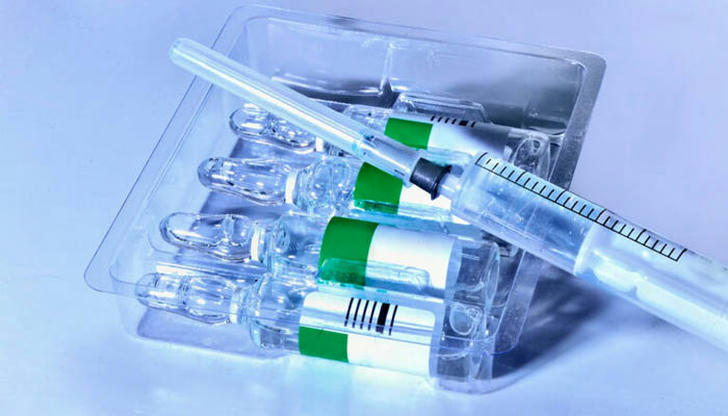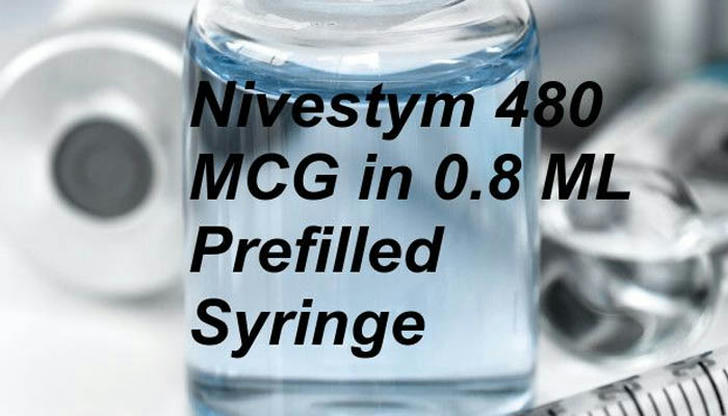What You Should Know About Novestym
What Nivestym Injection Is Used For
NIVESTYM is a powerful injection designed to give your immune system a major boost. It's primarily used to:
Cut Down on Infections: For cancer patients undergoing chemotherapy, which often leads to severe low white blood cell counts and fever, NIVESTYM can help reduce the chances of infections like febrile neutropenia.
Speed Up White Blood Cell Recovery: After chemotherapy for acute myeloid leukemia (AML), NIVESTYM can help your body bounce back faster, reducing the time needed for your white blood cells to recover and shortening the duration of any fever you might experience.
Manage Neutropenia: If you're undergoing intense chemotherapy and a subsequent bone marrow transplant (BMT), NIVESTYM can lessen the length of time you're suffering from low white blood cell counts and related issues, like febrile neutropenia.
Collect Stem Cells: If you need to gather your own stem cells for a transplant, NIVESTYM can help mobilize these cells from your bone marrow into your blood, making them easier to collect.
Ease Symptoms of Rare Neutropenia Types: For patients with congenital, cyclic, or idiopathic neutropenia, NIVESTYM can help reduce the severity and duration of symptoms such as fever, infections, or mouth ulcers.

How to Use Nivestym Injection
For Cancer Patients Undergoing Chemotherapy: Start with a dose of 5 mcg/kg/day. You can get this as a subcutaneous injection, a brief intravenous infusion (15 to 30 minutes), or a continuous intravenous drip. Be sure to adjust the dosage and timing as needed based on your doctor's advice.
For Bone Marrow Transplant: Administer 10 mcg/kg/day via an intravenous infusion, but keep it to a maximum of 24 hours.
For Stem Cell Collection: Use 10 mcg/kg/day as a subcutaneous injection. Begin at least 4 days before the first cell collection procedure and keep going until the last one.
For Congenital Neutropenia: Start with 6 mcg/kg as a subcutaneous injection twice daily.
For Cyclic or Idiopathic Neutropenia: Begin with 5 mcg/kg as a daily subcutaneous injection.
Important Note: Avoid using less than 0.3 mL (180 mcg) with the NIVESTYM prefilled syringe to prevent dosing mistakes.

Who Should Not Use Nivestym
Do not use NIVESTYM if you have had severe allergic reactions to similar drugs, like filgrastim or pegfilgrastim.
Warnings and Precautions
Splenic Rupture: Rare, but serious cases of spleen rupture, sometimes fatal, have been linked to filgrastim products. If you experience pain in the upper left abdomen or shoulder, get checked for an enlarged spleen or possible rupture.
Acute Respiratory Distress Syndrome (ARDS): ARDS has been reported in some patients. If you develop a fever and breathing difficulties, check for ARDS and stop NIVESTYM if needed.
Serious Allergic Reactions: Severe allergic reactions, including anaphylaxis, can occur, often after the first dose. Treat any allergic reactions promptly and stop NIVESTYM if serious responses develop.
Sickle Cell Disorders: Patients with sickle cell disorders might experience severe crises. If this happens, discontinue NIVESTYM.
Glomerulonephritis: Kidney inflammation has been seen in some cases. If you suspect this, evaluate and consider lowering the dose or stopping NIVESTYM.
Alveolar Hemorrhage and Hemoptysis: Rare cases of lung bleeding and coughing up blood have been reported, typically resolving after stopping the drug. NIVESTYM isn't approved for use in healthy donors for stem cell collection.
Capillary Leak Syndrome: This syndrome, marked by fluid leakage from blood vessels, can be severe. Watch for symptoms like low blood pressure, swelling, and increased blood concentration. Treat immediately if these occur.
MDS and AML: There's a risk of developing myelodysplastic syndrome (MDS) or acute myeloid leukemia (AML), especially in congenital neutropenia cases. Monitor for these conditions and weigh the risks if abnormal cell changes occur.
Thrombocytopenia: Low platelet counts have been observed. Keep an eye on platelet levels during treatment.
Leukocytosis: Excessive white blood cell counts might happen, particularly in cancer patients. If counts exceed 100,000/mm³, discontinue NIVESTYM.
Cutaneous Vasculitis: Skin inflammation has been reported, usually in long-term users. Hold off on NIVESTYM if this occurs and resume at a lower dose when symptoms improve.
Potential Effect on Tumors: NIVESTYM stimulates white blood cells, which might inadvertently affect tumor cells. Its safety in certain cancers isn't fully confirmed.
Avoid Simultaneous Use with Chemotherapy and Radiation: Combining NIVESTYM with chemotherapy or radiation therapy isn't recommended as its effects aren't fully studied in these situations.
Nuclear Imaging: Growth factor therapy can lead to temporary changes in bone scans. Consider this when interpreting results.
Aortitis: A rare inflammation of the aorta has been reported. Symptoms can include fever and back pain. Discontinue NIVESTYM if aortitis is suspected.

Common Side Effects
Cancer Patients on Chemotherapy: Common side effects include fever, pain, rash, cough, and trouble breathing.
AML Patients: Watch for pain, nosebleeds, and rash.
Bone Marrow Transplant Patients: Rash is frequently reported.
Stem Cell Collection: Expect bone pain, fever, and headaches.
Severe Chronic Neutropenia (SCN): Common issues include pain, anemia, nosebleeds, diarrhea, numbness, and hair loss.

